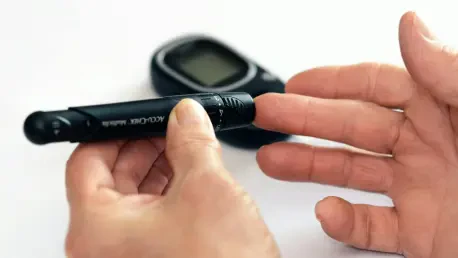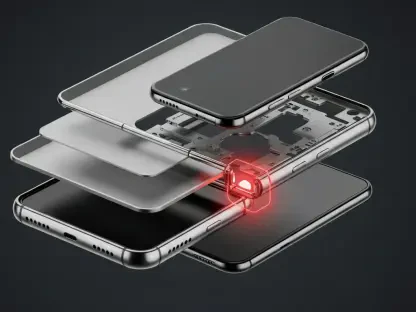In an era where digital innovations continue to reshape the health and wellness landscape, the advent of invisible health monitoring marks a compelling evolution in preventive healthcare technology. Transitioning from visible wearables like fitness trackers and smartwatches, this shift to seamless sensor integration in the environment offers a more sophisticated and less intrusive means of tracking vital health metrics. This groundbreaking technology positions itself as not merely the next step in health monitoring but rather a fundamental transformation in how individuals engage with their health. The potential of invisible health monitoring to provide continuous and passive collection of essential health data promises to redefine the boundaries of personal and public health.
Understanding Invisible Health Monitoring
Invisible health monitoring is a novel approach leveraging the use of ambient sensors and non-contact technologies to gather health metrics without necessitating any user interaction with monitoring devices. Contrary to traditional wearables, which demand regular skin contact and conscious user engagement, these systems operate unobtrusively in a manner that fuses into daily life. Located in various environments like homes, offices, and public venues, these systems employ advanced sensors to continuously track a range of health indicators.
This invisible approach allows for the monitoring of heart rate variability, respiratory patterns, sleep quality, and stress levels, using cutting-edge technologies such as radar sensors, thermal imaging, and advanced acoustics. Unlike traditional wearables, which rely heavily on user compliance and frequent interactions, these systems work dynamically in the background, offering a seamless blend of technology and wellness that suits the lifestyle of users. As a result, the integration of this monitoring type brings a new dimension to personal healthcare by ensuring that vital data is collected without intrusiveness or disruption to daily routines.
Advances in Invisible Health Tech
The landscape of technology to achieve contactless and invisible health monitoring is rapidly evolving, focusing on more sophisticated and precise health tracking approaches. One of the pivotal developments in this sector comprises radar-based sensors capable of detecting minute movements from several feet away. These sensors can accurately capture breathing patterns and heart rate, reflecting a significant advancement in home-based health monitoring systems.
Thermal imaging represents another stride in invisible monitoring, enabling continuous tracking of body temperature and fever detection. This technique provides valuable insights for individual health management as well as public health screening by offering real-time symptom analysis. Acoustic monitoring, a vital component of this innovation, utilizes advanced microphones and AI algorithms to evaluate breathing patterns, coughing frequency, and even vocal stress indicators, offering a comprehensive view of respiratory health. These dynamic systems serve particularly well in monitoring elderly individuals or those with chronic conditions, providing peace of mind in ensuring that vital data is consistently captured without user intervention.
Benefits Over Traditional Wearables
The shift to invisible health monitoring offers multiple advantages compared to traditional wearable technology, extending beyond mere convenience. The fundamental issue with conventional wearables often lies in user compliance, as devices require daily engagement and routine charging. Invisible health monitoring bypasses these limitations by negating the need for users to remember to wear or charge devices, encouraging consistent data collection without gaps.
Moreover, this technology enhances user comfort by integrating seamlessly into the user’s environment, avoiding the physical discomfort often associated with wearables during sleep or exercise. Continuous data collection facilitated by these systems activates without interruption, ensuring 24/7 health tracking. Enabling local data processing provides enhanced privacy options by reducing the risk of transmitting personal information to external servers. Furthermore, the zero-maintenance nature of these systems, eliminating the need for regular charging or device management, offers a streamlined experience.
Implementing Invisible Monitoring in Daily Life
Embracing invisible health monitoring doesn’t necessitate overhauling an existing living space into a futuristic environment. Integration can begin gradually with existing smart home technology, requiring minimal adjustment to daily routines. Health enthusiasts can initiate this transition by upgrading current smart home devices to models equipped with health monitoring capabilities, such as smart speakers or displays featuring integrated radar sensors oriented towards sleep and breathing metrics.
Prioritizing which health metrics are most significant is crucial for users to determine elements like sleep quality, stress levels, or respiratory health that align with personal goals. Establishing a primary monitoring zone, for instance in the bedroom or home office, facilitates consistent data collection. Placing sensors accurately according to specifications maximizes data precision, ensuring basic measures are recorded for 2-3 weeks to establish a benchmark before any lifestyle modifications are made. Additionally, integrating invisible monitoring data with existing health applications helps consolidate health insights into a comprehensive dashboard, empowering users with actionable information for informed decision-making.
Privacy and Accuracy Challenges
Despite the convenience of invisible health monitoring, the technology presents consequential challenges related to privacy and data accuracy that must be saliently addressed. Continuous data collection through contactless monitoring could provoke surveillance concerns, unlike wearables that users can decide to remove. Users might worry about the constant nature of data acquisition, particularly with systems always being active in the background.
Nonetheless, current solutions frequently employ edge computing, enabling data to be processed locally and reducing the need to transmit personal data to external entities. Clear data ownership policies and the ability to delete data easily are essential features for any system selected for usage. While the accuracy of invisible monitoring systems is continually improving, they may not always match the precision of direct-contact wearables for specific metrics. Factors like room temperature, humidity, and electromagnetic interference can impact sensor accuracy, underlining the necessity of viewing invisible monitoring as complementary, rather than a substitute for, conventional tracking methods.
The Path Forward for Invisible Monitoring
In today’s world, where digital innovations are constantly reshaping health and wellness, invisible health monitoring technology is on the rise, representing a significant evolution in preventive healthcare. Moving beyond visible wearables like fitness trackers and smartwatches, new advancements now focus on seamlessly integrating sensors into the environment, offering a more advanced and less intrusive method for tracking crucial health metrics. This cutting-edge technology is not just an upgrade in health monitoring; it represents a transformative shift in how people manage their health. The beauty of invisible health monitoring is its ability to provide consistent and passive data collection, redefining personal and public health’s potential. This continuous access to essential health information empowers individuals to take more proactive control over their well-being. By gathering real-time data without disrupting daily life, these invisible systems promise to enhance health insights and promote a healthier society, marking a crucial development in the future of healthcare.









